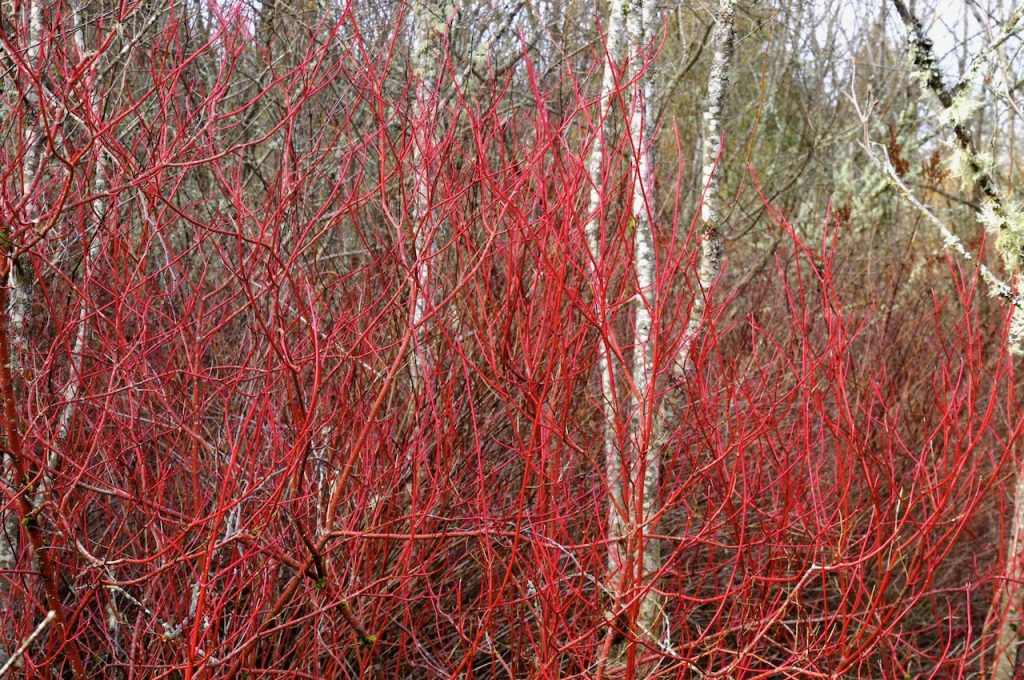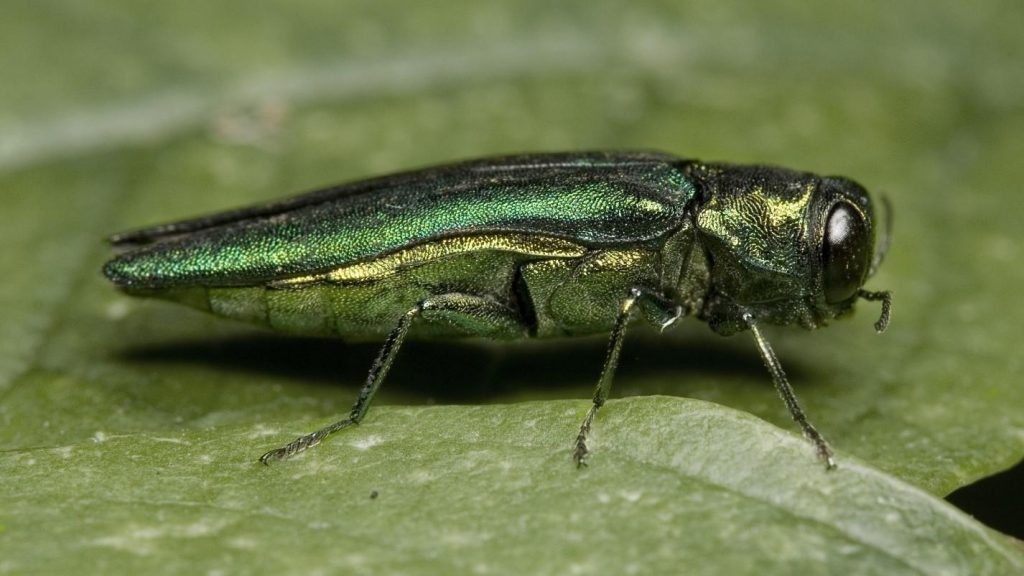Article and photos by John Sparks
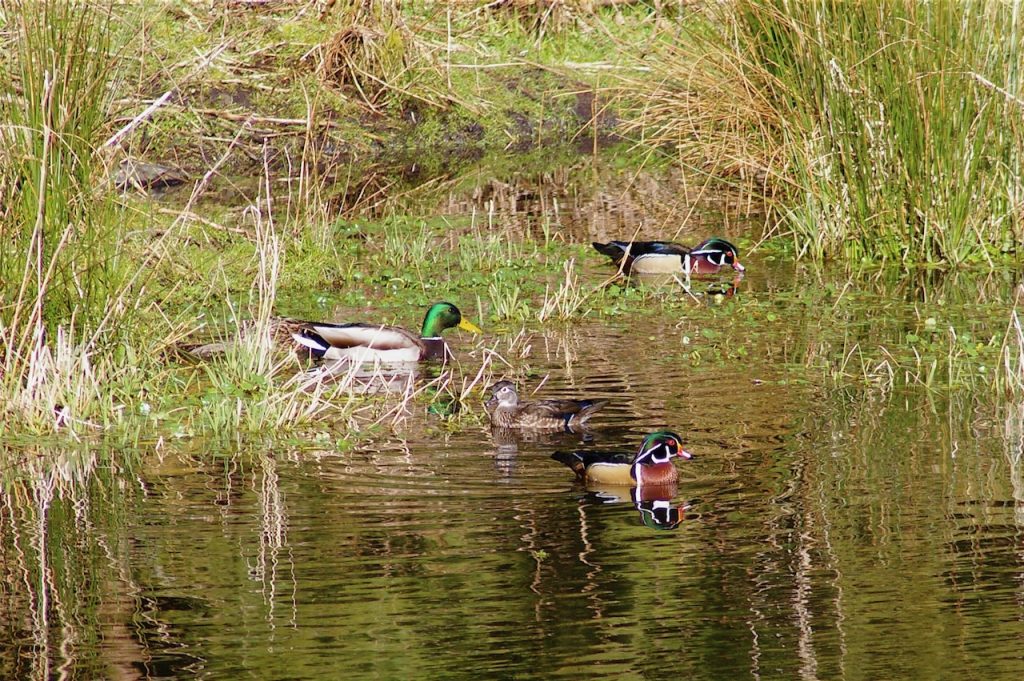
In recent years, 23 species of duck have been observed at Oaks Bottom, including two exotics (Muscovy duck and Mandarin duck). Some ducks, such as red-breasted merganser, cinnamon teal, greater scaup, and common goldeneye, pop up only occasionally. Others are seen with seasonal frequency; these include ring-necked duck, bufflehead, American wigeon, northern pintail, and lesser scaup. A review of eBird observations reveals, however, that there are six very common ducks at Oaks Bottom. Here’s a quick rundown of the popular half dozen!
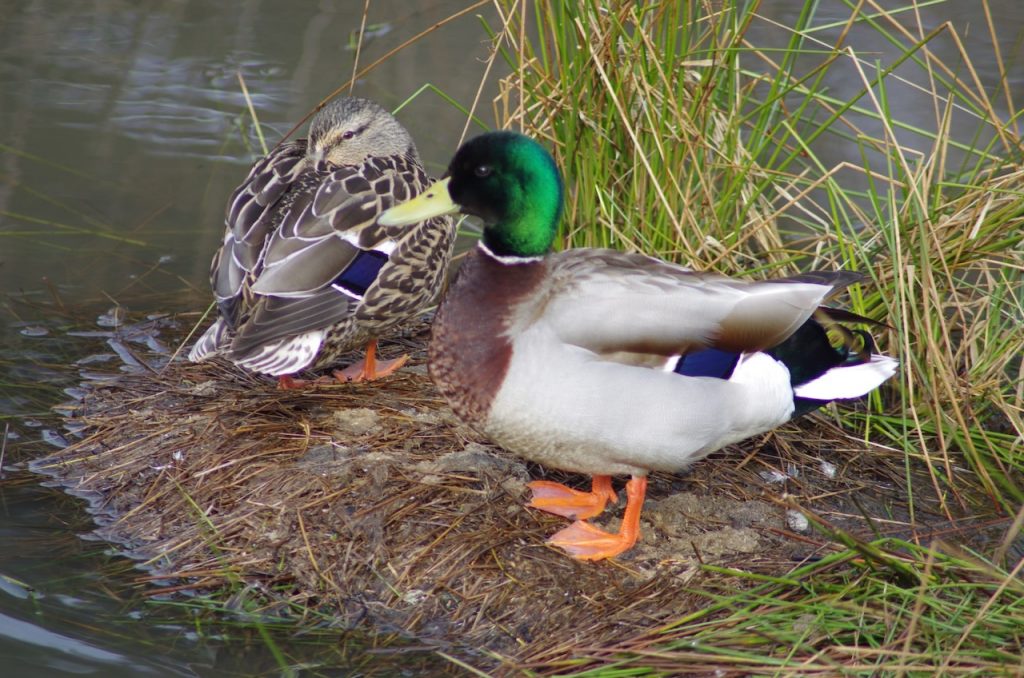
Mallard (Anas platyrhynchos)
Mallards are your quintessential waterfowl, well-known in children’s stories and literature, and native across the northern hemisphere. They are the ancestor to most domestic duck breeds, and even today urban mallards regularly breed with domestic ducks so that most have a compromised gene pool. In fact, mallards are one of the least sexually discerning of all creatures and have been recorded mating with over 60 other species of duck! The female mallard is the author of the classic duck “quack”, while males emit a more rasping call. Mallards are dabbling ducks and feed on aquatic vegetation, but they will sometimes graze, and one-third of their diet can be animal in origin, including slugs, insects, and worms.

Wood duck (Aix sponsa)
Wood ducks are the second most observed duck at Oaks Bottom. Like the mallard, they are present year-round and can most frequently be seen among the willow cover on the east side of Wapato Pond. The colorful males are distinctive with their red eyes surrounded by iridescent plumage; the brown female’s eyes are circled by a white ring. They can perch on tree branches and prefer to nest in tree cavities, although around the wetlands of Portland many nesting boxes have been placed for their convenience. One day after the chicks hatch, the mother checks the security of the neighborhood, and then one by one these precocious little bundles of fluff tumble from their nesting cavity, plop on the ground, and join the real world. They begin feeding themselves right away. Wood ducks have large egg clutches; as many as 11 chicks have been seen with one mother at Oaks Bottom.
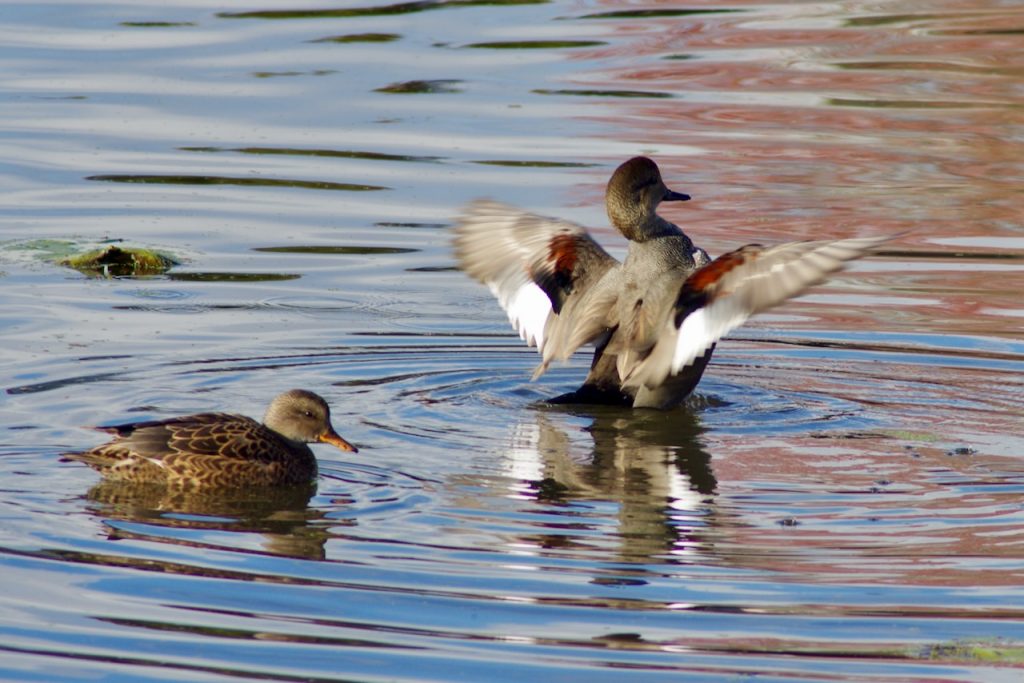
Gadwall (Mareca strepera)
The rather plain gadwall is often overlooked by casual observers. Males are mostly gray; females are mostly brown. Like the mallard, the gadwall is a dabbling duck, but it feeds farther from the shore. You may see pairs upended as they prospect for food, rear end protruding vertically from the water’s surface. They are quiet ducks and also monogamous, raising only one brood per year unlike the promiscuous mallard. Hunters consider them one of the best tasting waterfowl. Gadwalls are found across the northern hemisphere, and they are year-round residents in the Willamette Valley. Gadwalls that breed east of the Cascades in Oregon migrate to California. At Oaks Bottom, they are present most of the year, but they are not frequently observed in summer.
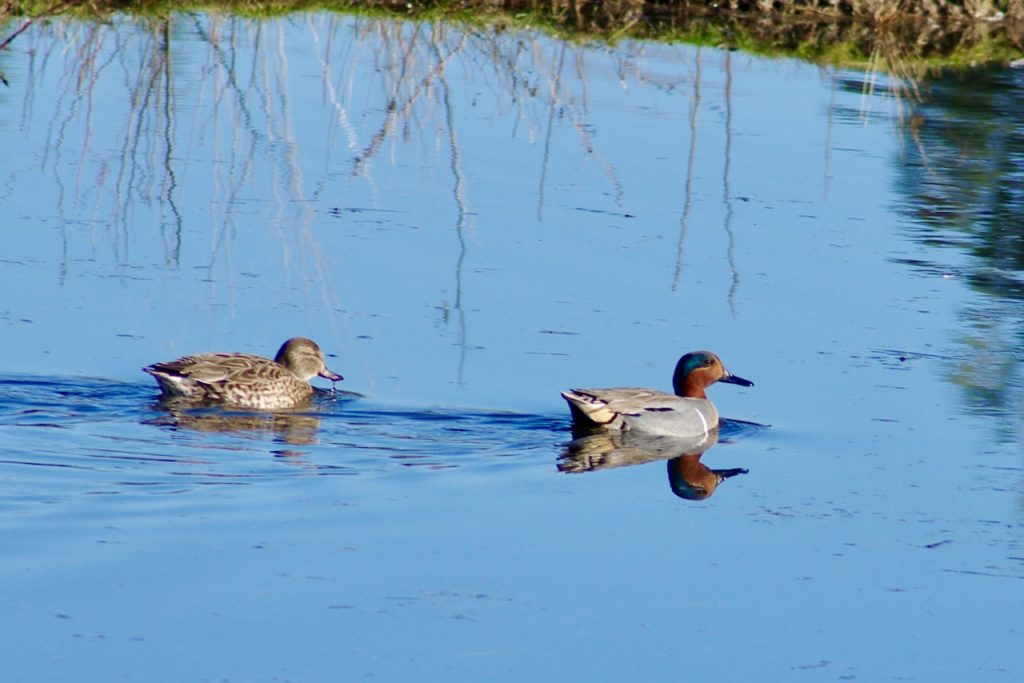
Green-winged teal (Anas carolinensis)
The green-winged teal, our smallest dabbling duck, has usually departed from Oaks Bottom by May and begins to return in mid-August. In summer, they take up residence in parts of Canada and Alaska. Hunters also consider this duck a delicacy. Green-winged teals can often be seen foraging on the shore, where they may nibble on the seeds of sedges, rushes, and some grasses. When on the water, they like to stay close to cover so they can quickly duck into the vegetation should a predator appear. Teals can take off in flight from a floating position on the water without needing the usual “runway” paddle like other ducks.
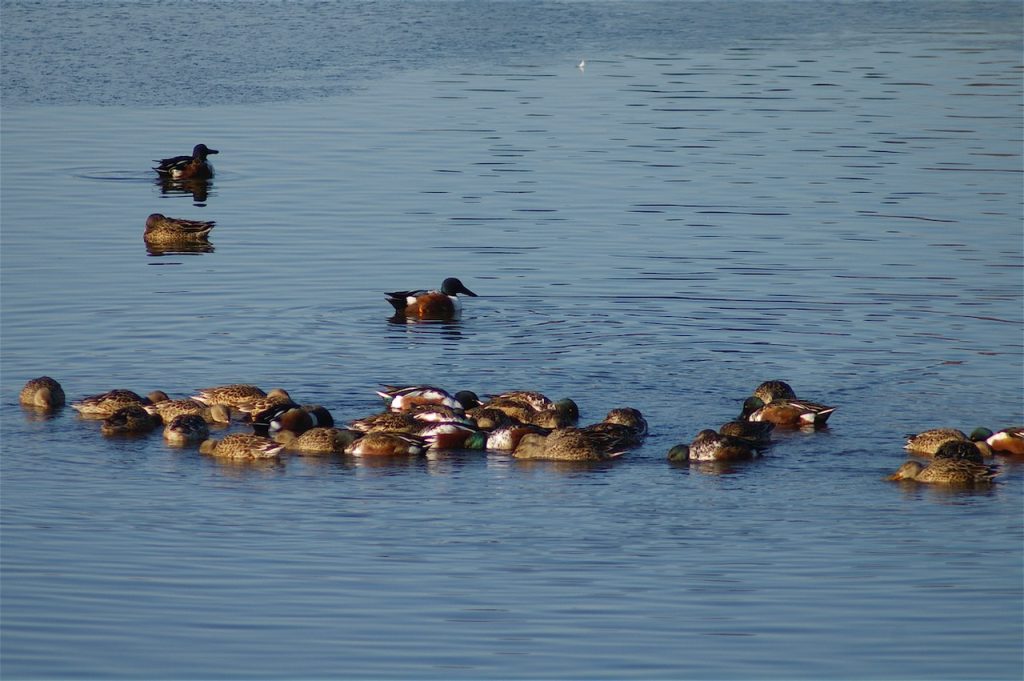
Northern shoveler (Spatula clypeata)
The shoveler breeds across the northern hemisphere and winters farther south. It is native to parts of all continents except Australia and Antarctica. The pond at Oaks Bottom is ideal habitat for shovelers, which prefer rather murky, still waters containing lots of invertebrates and plant food. They can often be observed on wastewater treatment ponds. The shoveler’s distinctive large bill is lined with small membranes, akin to the baleen of some whales, which serve to sift out small crustaceans from the water. Shovelers are gone from the area by May and won’t return until September. In winter, there are significant rafts of these ducks on the pond.
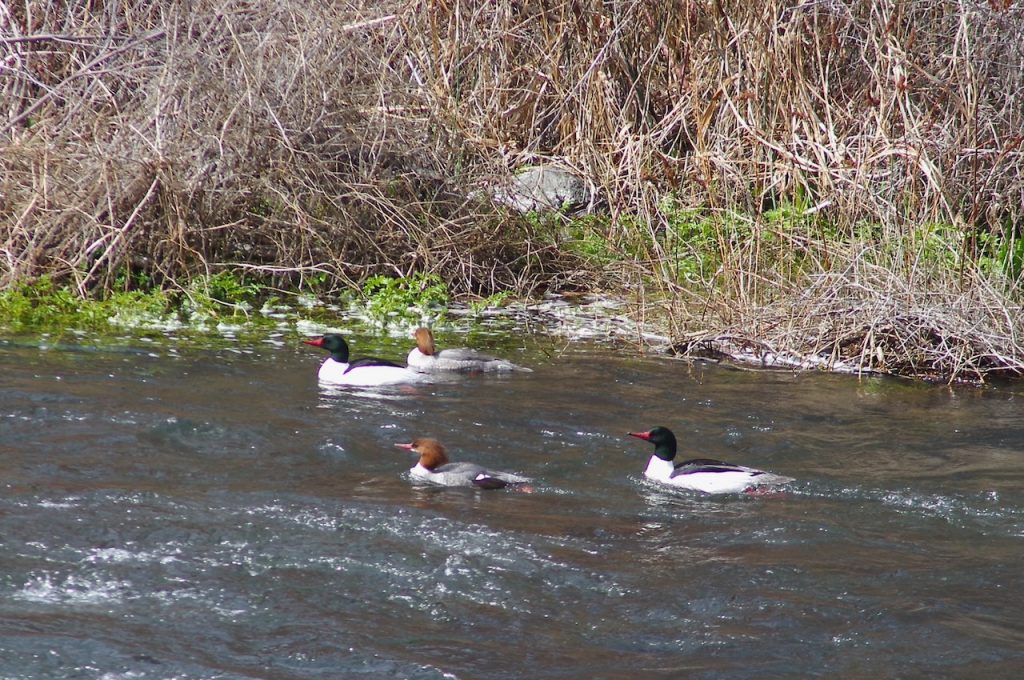
Common merganser (Mergus merganser)
Of the most commonly observed ducks at Oaks Bottom, common mergansers have the most restricted season and are usually present only from October into April. Thus, they are fairly early migrants to the far north. It’s another one of our waterfowl that is circumpolar in distribution. The males’ mostly white bodies, green heads, and thin red bills are distinctive. They tend to congregate in large groups in winter at Oaks Bottom, but their more recognizable habitats are the fast flowing rivers and streams of the region. Mergansers often collude in small groups to paddle downstream and then turn on a dime, forming an underwater phalanx to corral and snatch fish with their serrated bills. Unlike the other ducks described here, common mergansers are quite at home in salt water environments as well.

